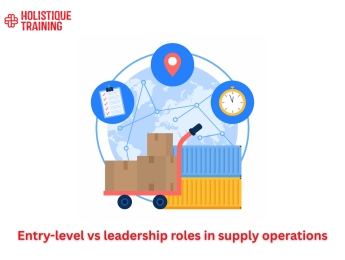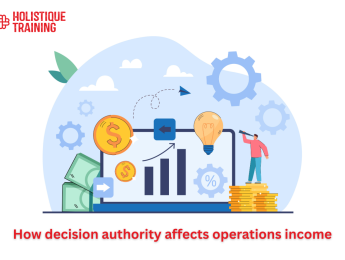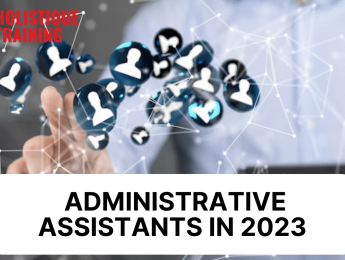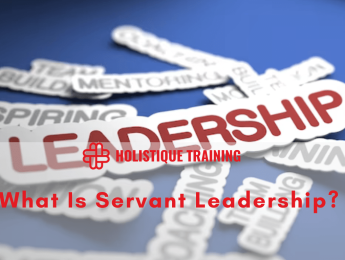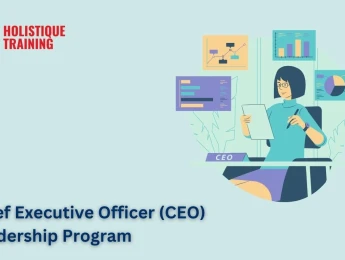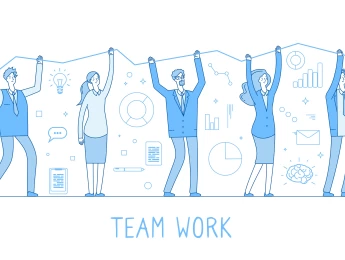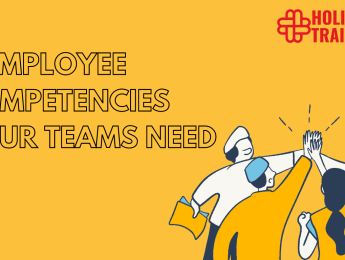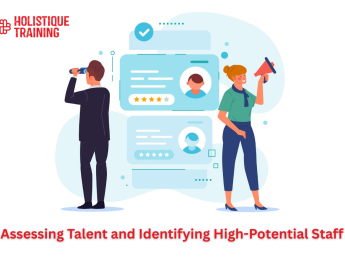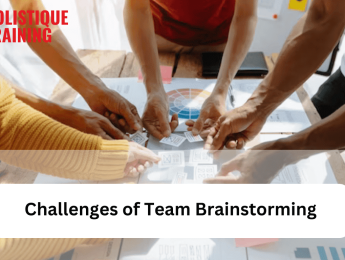- Table of Contents
- Introduction
- What Is a Conflict of Interest?
- Is a Conflict of Interest a Legal Issue?
- How Can a Conflict of Interest Impact the Workplace?
- Why Is Avoiding Conflicts of Interest Important?
- Strategies for Managing Conflicts of Interest in the Workplace
- What Are OECD Guidelines?
- Examples of Workplace COIs
- In Conclusion
Introduction
As professionals, we find ourselves entwined in a complex web of relationships and responsibilities within the workplace. While collaboration is essential for the success of any organisation, it\'s equally important to recognise and address potential conflicts of interest (COIs) that may arise. In this comprehensive exploration, we will delve into the intricate world of conflicts of interest, from their definition to legal implications, and explore strategies for effective management.
What Is a Conflict of Interest?
At its core, a conflict of interest arises when an individual\'s personal interests clash with their professional responsibilities. These conflicts can manifest in various forms, and it\'s crucial to identify the key types:
Nepotism
A well-known manifestation of conflicts of interest, nepotism occurs when individuals in positions of authority favour their relatives or close associates. This favouritism can seep into various facets of the workplace, including hiring, promotions, and project assignments. The repercussions of nepotism extend beyond the individuals directly involved, impacting team dynamics and overall morale.
Self-Dealing
Delving into the financial realm, self-dealing surfaces as a form of conflict of interest where individuals exploit their professional roles for personal gain. This could involve awarding contracts to businesses in which they have a financial stake, or manipulating transactions to benefit their personal interests. Self-dealing not only compromises the integrity of decision-making but also undermines the trust that forms the bedrock of any organisation.
Favouritism in Project Assignments
Picture a scenario where a manager consistently assigns high-profile projects to a team member with whom they share a close personal relationship. This type of conflict of interest, often overlooked, can skew opportunities and recognition within the team. It creates an uneven playing field where those without personal connections may find themselves at a disadvantage.
Vendor Relationships
Conflicts of interest can arise when individuals responsible for vendor selection or procurement decisions have personal ties to specific suppliers. This could lead to biassed decision-making, potentially favouring a vendor based on personal relationships rather than objective criteria such as quality, cost, or reliability.
Undisclosed External Employment
Beyond the confines of the workplace, conflicts can lurk in the form of undisclosed external employment. An employee may hold a position in an organisation that competes with their employer, raising concerns about divided loyalties and the potential sharing of sensitive information.
The dynamics of conflicts of interest are far-reaching, permeating various aspects of professional life. Recognising the diverse forms they can take is crucial for establishing effective preventive measures and cultivating a workplace culture that values transparency and fairness.
Navigating the terrain of conflicts of interest involves not only identifying these scenarios but also understanding their implications on organisational dynamics. As we continue our exploration, we\'ll unravel the legal aspects of conflicts of interest and delve into the strategies organisations can employ to mitigate their impact and foster a workplace built on trust and ethical conduct.
Is a Conflict of Interest a Legal Issue?
The legal ramifications of conflicts of interest depend on the nature and severity of the conflict. While not all conflicts of interest are inherently illegal, they can lead to legal issues if they involve activities such as bribery, corruption, or fraudulent practices.
Legal frameworks vary across jurisdictions, but many countries have established regulations and codes of conduct to address conflicts of interest in the workplace. Violating these regulations can result in legal consequences, including fines, termination of employment, or even criminal charges in extreme cases.
How Can a Conflict of Interest Impact the Workplace?
The impact of conflicts of interest on the workplace can be far-reaching, affecting both individuals and the organisation as a whole. Here are some ways in which COIs can have consequences:
a) Erosion of Trust
At the heart of a well-functioning workplace lies trust – trust in leadership, trust among colleagues, and trust in the fairness of decision-making processes. When conflicts of interest rear their head, particularly in the form of favouritism or nepotism, trust becomes vulnerable. Employees may perceive that opportunities are not distributed based on merit but are rather influenced by personal relationships. This erosion of trust can breed cynicism, hampering collaboration and stifling the open communication essential for a thriving workplace.
b) Compromised Decision-Making
Conflicts of interest inject a dose of bias into decision-making processes. When personal interests clash with professional responsibilities, the objectivity that should guide decisions becomes clouded. This compromise in decision-making can lead to choices that favour individuals with personal connections rather than those in the best interest of the organisation. Over time, this can result in a workplace culture where decisions are met with scepticism, hindering progress and innovation.
c) Damaged Reputation
News of conflicts of interest, whether internal or external, has the potential to spread rapidly. The damage to the organisation\'s reputation can be severe and lasting. Stakeholders, clients, and partners may question the integrity of the organisation, impacting relationships and potentially leading to financial losses. A tarnished reputation is not easily restored, and organisations must invest significant effort in rebuilding trust once it\'s been compromised.
d) Employee Morale
The perception of an unfair workplace, where personal connections outweigh merit, can significantly impact employee morale. When employees believe that their efforts may not be recognised or rewarded fairly, job satisfaction diminishes. This, in turn, can contribute to higher turnover rates, increased absenteeism, and a decline in overall productivity.
e) Increased Legal Risks
Depending on the nature and severity of the conflict of interest, legal consequences may come into play. Violating regulations and codes of conduct related to conflicts of interest can result in legal action, ranging from fines to termination of employment. Organisations may also face legal challenges that further tarnish their standing in the business community.
f) Undermined Team Dynamics
Conflicts of interest can create tension and divisions within teams. When employees perceive that others are receiving preferential treatment, collaboration may suffer. Team members may become disengaged or harbour resentment, leading to a fractured work environment that hampers creativity and teamwork.
g) Strategic Decision-Making Challenges
Organisations often make strategic decisions that impact their trajectory and success. Conflicts of interest among decision-makers can impede the development and execution of sound strategies. Strategic choices influenced by personal gain rather than the organisation\'s best interests may lead to missed opportunities and increased vulnerability to market changes.
In the complex interplay of the workplace, conflicts of interest are not merely abstract ethical concerns; they have tangible and often detrimental effects. Recognising these impacts is the first step toward implementing robust strategies to address and prevent conflicts of interest, fostering a workplace where trust, fairness, and ethical conduct prevail.
Why Is Avoiding Conflicts of Interest Important?
Maintaining a workplace free from conflicts of interest is essential for fostering a healthy organisational culture. This, in turn, leads to an average turnover rate of only 13.9%, in stark contrast to the 48.4% turnover witnessed by those with a lackluster culture, statistics show. However, this is just one of the reasons why handling COIs in the workplace is important. Here are some other compelling reasons:
Preserving Organisational Integrity
At the core of every successful organisation lies its integrity. Conflicts of interest, when unaddressed, can compromise this integrity. Organisations that prioritise ethical conduct demonstrate to employees, stakeholders, and the wider community that they operate with transparency and fairness. Preserving organisational integrity builds a foundation of trust that is essential for long-term success.
Enhancing Employee Morale and Job Satisfaction
A workplace perceived as fair and impartial is conducive to high morale and job satisfaction. When employees believe that their efforts and achievements are recognised based on merit rather than personal connections, they are more likely to be engaged, motivated, and satisfied in their roles. This positive work environment contributes to, as mentioned above, lower turnover rates as well as a more cohesive, productive team.
Ensuring Fairness in Decision-Making
Conflicts of interest can distort decision-making processes, leading to choices that may not align with the best interests of the organisation. Avoiding conflicts of interest ensures that decisions are made based on objective criteria rather than personal relationships or ulterior motives. This commitment to fairness enhances the credibility of leadership and instil confidence in the decision-making processes.
Building Trust Among Stakeholders
Trust is a currency that organisations cannot afford to deplete. A workplace free from perceived favouritism or unfair advantages builds trust not only among employees but also with clients, partners, investors, and other stakeholders. Trust is a valuable asset that enhances the organisation\'s reputation, facilitates collaboration, and contributes to long-term success.
Mitigating Legal Risks
Beyond ethical considerations, avoiding conflicts of interest is crucial for legal compliance. Many jurisdictions have regulations and codes of conduct in place to address conflicts of interest in the workplace. Violating these regulations can lead to legal consequences, including fines, termination of employment, or even criminal charges. Mitigating legal risks is a proactive measure to ensure the organisation operates within the bounds of the law.
Fostering Innovation and Creativity
A workplace free from the shadow of conflicts of interest is more conducive to innovation and creativity. When employees believe that their ideas and contributions are evaluated based on their merit, they are more likely to engage in creative problem-solving and contribute to the organisation\'s growth. A culture of fairness and impartiality encourages the free exchange of ideas, driving innovation forward.
Enhancing Organisational Resilience
Organisations face myriad challenges in today\'s dynamic business landscape. Those with a strong ethical foundation, unmarred by conflicts of interest, are better equipped to navigate these challenges. Ethical behaviour is a pillar of organisational resilience, helping the organisation weather storms, build lasting relationships, and adapt to changing circumstances.
Demonstrating Social Responsibility
As organisations play an increasingly significant role in society, they are expected to uphold ethical standards and contribute positively to their communities. Avoiding conflicts of interest is not just about internal integrity; it\'s a demonstration of social responsibility. Organisations that prioritise ethical conduct contribute to the greater good, earning the respect and support of the communities in which they operate.
In essence, avoiding conflicts of interest is not merely a checkbox on a compliance list; it\'s a strategic imperative woven into the fabric of organisational success. It is a commitment to values that transcend short-term gains, fostering a workplace culture that is not only resilient and innovative but also one that stands the test of time. As we explore strategies for managing conflicts of interest, it becomes evident that this commitment is a cornerstone for building a workplace where individuals thrive, and the organisation flourishes.
Strategies for Managing Conflicts of Interest in the Workplace
As revealed in the Association of Certified Fraud Examiners’ 2022 Report to the Nations, as cited by Case IQ, when there\'s corruption, like conflicts of interest, it usually goes on for about a year before anyone looks into it. During that time, according to Case IQ, a conflicted employee might cost the company a lot. Also, the failure to disclose an employee’s conflict of interest poses the risk of substantial fines for your organisation. That’s why it’s important to address them before they happen, and that means being proactive and clear. Here are some ways to do that:
1- Establish Clear Policies and Guidelines
The foundation for managing conflicts of interest begins with well-defined policies and guidelines. Organisations should articulate clear expectations regarding acceptable behaviour, discloseable relationships, and potential consequences for violations. These policies should be easily accessible to all employees and communicated regularly through training sessions and internal communications.
2- Provide Comprehensive Training Programs
Education is a powerful tool in preventing and managing conflicts of interest. Regular training programs should be implemented to raise awareness among employees about the various forms conflicts of interest can take. Training should cover the organisation\'s policies, guidelines, and procedures for reporting conflicts. This not only equips employees with the knowledge to identify conflicts but also empowers them to make ethical decisions.
3- Implement Robust Reporting Mechanisms
Encourage a culture of openness by establishing confidential and accessible reporting mechanisms. Employees should feel comfortable reporting potential conflicts of interest without fear of retaliation. These mechanisms may include anonymous hotlines, online reporting platforms, or designated individuals within the organisation responsible for handling such reports.
4- Conduct Regular Audits and Reviews
Periodic audits of financial transactions, hiring practices, and decision-making processes can help identify and address conflicts of interest proactively. Internal and external audits can provide an objective assessment of the organisation\'s adherence to its policies and guidelines, offering insights into areas that may require further attention.
5- Promote Transparency and Disclosure
Encourage employees to disclose any potential conflicts of interest openly. This includes relationships with vendors, family connections, and external employment. Transparent disclosure allows organisations to assess the potential impact of conflicts and take appropriate steps to manage them. It also fosters a culture of accountability and openness.
6- Establish an Independent Review Committee
For organisations dealing with complex or high-stakes conflicts, establishing an independent review committee can provide an additional layer of scrutiny. This committee, composed of impartial individuals within or outside the organisation, can assess reported conflicts objectively and recommend appropriate actions.

7- Tailor Training for Leadership Roles
Leadership plays a pivotal role in setting the tone for ethical behaviour within an organisation. Design training programs specifically for individuals in leadership positions, emphasising their unique responsibilities in managing conflicts of interest. Leaders should be well-versed in recognising potential conflicts, disclosing them appropriately, and making decisions that prioritise the organisation\'s best interests.
8- Integrate Ethical Considerations into Decision-Making Processes
Infuse ethical considerations into the organisation\'s decision-making processes. This involves evaluating decisions not only for their potential legal and financial implications but also for their alignment with the organisation\'s values and commitment to fairness. Incorporating ethical considerations into decision-making reinforces a culture that values integrity above expedience.
9- Monitor External Relationships
Pay attention to external relationships that employees may have, especially those that involve vendors, clients, or competitors. Establish guidelines for managing such relationships to minimise the potential for conflicts of interest. This may include restrictions on financial investments, limitations on dual employment, or recusal from decision-making involving parties with whom employees have personal connections.
10- Regularly Review and Update Policies
The business landscape is dynamic, and organisational structures evolve. Regularly review and update conflict of interest policies to ensure they remain relevant and effective. Changes in regulations, industry practices, or the organisational structure may necessitate adjustments to existing policies to address emerging challenges.
By implementing these strategies, organisations can build a robust framework for managing conflicts of interest. It\'s not only about compliance with regulations but, more importantly, about fostering a culture that values ethical conduct, transparency, and the long-term success of the organisation. As we delve into the international perspective with the OECD guidelines, it becomes evident that these strategies align with global best practices in addressing conflicts of interest.
Table 1: Challenges in managing COIs
Challenge | Description |
Lack of Transparent Reporting Mechanisms | Concealed conflicts hinder proactive resolution. |
Balancing Personal and Organisational Interests | Striking fairness amid conflicting personal allegiances. |
Difficulty in Identifying Subtle Nepotism | Recognising subtle favouritism requires keen observation. |
Navigating Dual Employment Dilemmas | Managing divided loyalties poses ethical quandaries. |
Addressing Undisclosed External Relationships | Uncovering concealed ties demands thorough scrutiny. |
What Are OECD Guidelines?
The Organisation for Economic Co-operation and Development (OECD) provides guidelines that offer a framework for managing conflicts of interest. These guidelines emphasise transparency, accountability, and the establishment of effective internal controls. Organisations can use the OECD guidelines as a reference point for developing their own strategies to address conflicts of interest.
Adhering to these guidelines involves promoting a culture of integrity, disclosing potential conflicts, and ensuring that decision-making processes are fair and impartial. By aligning with international best practices, organisations can enhance their credibility and demonstrate a commitment to ethical conduct.
Examples of Workplace COIs
To better understand how conflicts of interest can manifest in the workplace, let\'s explore a few real-world examples:
The Family-Owned Company
Consider a scenario where a senior executive in a company holds decision-making authority over the awarding of contracts. Unbeknownst to others, this executive has a sibling who owns a business that provides services the company requires. If the executive consistently awards contracts to the sibling\'s business without transparent disclosure or fair consideration of other vendors, this situation represents a clear conflict of interest. It intertwines personal relationships with professional responsibilities, potentially compromising the integrity of the procurement process.
Dual Employment Dilemma
Imagine an employee holding a full-time position in a technology company. This individual, passionate about a different industry, decides to take on a part-time role with a direct competitor. In doing so, they now face divided loyalties between their primary employer and the competing company. This dual employment scenario raises concerns about the employee\'s ability to maintain confidentiality, avoid conflicts of interest, and prioritise the interests of their primary employer.
Investments in Competing Businesses
A high-ranking executive, responsible for strategic decision-making, decides to invest a significant portion of their personal funds in a startup that operates in direct competition with their employer. This investment introduces a conflict of interest, as the executive may be inclined to make decisions that benefit their personal financial interests rather than the best interests of the organisation. It raises questions about the executive\'s ability to objectively assess competitive strategies and allocate resources.
Undisclosed Vendor Relationships
In a procurement department, an employee responsible for selecting vendors has a personal relationship with one of the suppliers. This relationship is not disclosed, and the employee consistently favours this particular vendor in decision-making. This undisclosed connection introduces bias into the procurement process, potentially leading to suboptimal choices that may not align with the organisation\'s goal of securing the best services or products at the most favourable terms.
Favouritism in Project Assignments
A manager consistently assigns high-impact projects to a team member with whom they share a close personal relationship, without considering the qualifications or skills of other team members. This favouritism can undermine team dynamics, create resentment among employees who feel overlooked, and impact the overall quality of project outcomes. It illustrates how conflicts of interest can influence opportunities for professional growth and recognition within the workplace.
Personal Investments in Client Companies
A financial advisor responsible for managing client portfolios decides to invest their personal funds in companies recommended to clients. This introduces a conflict of interest, as the advisor may be motivated to prioritise their personal financial gain over the best interests of the clients. Such a scenario erodes the trust clients place in the advisor and challenges the fundamental principle of acting in the clients\' best interests.
These examples highlight the diverse nature of conflicts of interest, emphasising the importance of recognising and addressing these challenges in the workplace. Whether rooted in familial relationships, financial interests, or personal connections, conflicts of interest have the potential to disrupt organisational harmony, compromise decision-making, and erode trust. As organisations strive to foster cultures of transparency and integrity, understanding these examples becomes crucial for developing effective strategies to prevent and manage conflicts of interest.
In Conclusion
Conflicts of interest are intricate challenges that demand careful navigation. Organisations must proactively address potential conflicts, foster a culture of transparency and integrity, and implement robust mechanisms for reporting and managing these conflicts. By doing so, they not only comply with legal requirements but also cultivate a workplace where trust, fairness, and ethical conduct thrive. In this complex landscape, the journey towards a conflict-free workplace is a continuous process, requiring vigilance, education, and a commitment to the highest standards of professional conduct.
Finally, in your quest for a harmonious and conflict-free workplace, consider enrolling in our transformative course, ‘How to Build a Cohesive Team for Excellence.’ Uncover the secrets to fostering collaboration, enhancing communication, and cultivating a work environment where excellence thrives. Take the next step towards a workplace that not only manages conflicts of interest but propels your team towards unparalleled success. Enrol now or contact us for more information!




